- Home
- Alistair Moffat
The Night Before Morning
The Night Before Morning Read online
Alistair Moffat was born and bred in the Scottish Borders. He is a former Director of the Edinburgh Festival Fringe and Director of Programmes at Scottish Television, and is the founder of the Borders Book Festival. From 2011 to 2014 he was Rector of the University of St Andrews. He is the author of a number of highly acclaimed books, including Scotland: A History from Earliest Times, Britain’s DNA Journey, To the Island of Tides and The Hidden Ways. The Night Before Morning is his first work of fiction, and TV rights were acquired by actor and producer Tom Conti prior to publication.
First published in 2021 by
Birlinn Limited
West Newington House
10 Newington Road Edinburgh
EH9 1QS
www.birlinn.co.uk
Copyright © Alistair Moffat 2021
The moral right of Alistair Moffat to be identified as the author of this work has been asserted by him in accordance with the Copyright, Designs and Patents Act 1988
All rights reserved. No part of this publication may be reproduced, stored or transmitted in any form without the express written permission of the publisher.
ISBN: 978 1 78027 737 0
eBook ISBN: 978 1 78885 470 2
British Library Cataloguing-in-Publication Data
A catalogue record for this book is available from the British Library
Typeset by Initial Typesetting Services, Edinburgh
Printed and bound by Clays Ltd Elcograf S.p.A.
In memory of Jennie Erdal,
whose sparkle is sorely missed
PROLOGUE
16 June 1945
Under the canopy of the trees, it was black-dark. Through the full leaf of high summer, no light could pierce the oaks and chestnuts, and the midnight path was a matter of guesswork. The man moved very slowly. Often stopping, holding his breath, listening for the rustle of movement, sometimes stretching out a hand where he thought a tree trunk might stand in his way, he made slow, hesitant progress. And yet, about a hundred yards away, he could see where he wanted to go. High, bright and full, the moon lit the night river, glinting silver off the water. But reaching it was taking much longer than he planned and he could not risk a torch.
Edging closer to the moonlit water, groping through the darkness, his feet, not his eyes, recognised exactly where he was. The last few yards of the track were paved – a memory of its ancient purpose, harking back to the time when many walked upon it, going about their daily business. Red sandstone paving led to the river’s edge because once it had been a busy ford, the Monksford. For three lazy, meandering miles the River Tweed flows through sanctity, looping around two ancient monasteries, and in the millennia before bridges, this was the place where monks had forded the great river. Now half forgotten, overgrown and used only by the occasional horse rider, the track suited his purpose perfectly.
Once the man found the wooden kayak he’d hidden earlier that day, he dragged it to the edge of the river, making as little noise as possible. The moonlight was suddenly brilliant, almost dazzling, dancing off the water’s surface as the river turned south towards his destination. Wading into the current, the man expertly steadied the kayak and sat down, rocking it slightly. Paddling quickly across to the far bank and its welcoming darkness, he allowed the current to carry him downstream and to what he hoped would be the solution to a mystery.
What John Grant had sent him was both puzzling and perplexing. At his funeral, few contemporaries gathered because the old man had outlived almost all of them. It was a sparse, quiet atmosphere in the chapel but there was one colourful emblem of the past that conjured a memory of extraordinary valour during one of the bloodiest battles in history. On the coffin lay the old soldier’s regimental Glengarry cap. Navy blue with a red toorie bobble, two long black ribbons at the back, and a red, white and black dicing trim, it bore the gleaming badge of the King’s Own Scottish Borderers. He had fought bravely at the Battle of the Somme in 1916, leading his men over the top again and again and rescuing two wounded comrades from the desolation of no man’s land.
It was the old soldier’s granddaughter who had first brought them together. At a talk on local Roman antiquities, the man had noticed her immediately, sitting in the front row: a tall, fair, classic beauty with pale, ice-blue eyes. In repose, her face seemed sad to him, etched with a memory of loss or disappointment. But when she smiled, it changed completely, and warmth flooded back. Afterwards she had made introductions, even though she did not know the man’s name. Perhaps it was only politeness with a newcomer, and maybe it was his imagination, but did she do that to discover who he was? At the time he had no idea of the part she played in what was to follow.
After that first meeting, the man had joined the history society and become friendly with John Grant. The tone was mostly formal, reticent about anything remotely personal, conversation usually confined to matters historical. But behind the politeness, there glowed an immediate but unstated warmth and great respect.
A week after the funeral, a well-sealed brown envelope arrived from a firm of local solicitors. A formal letter told the man that their client had wished him to have the enclosed papers. There was a spidery, handwritten letter clipped to a sheet carrying two verses of a poem, a series of maps and a drawing.
I know that the sort of ancient history I enjoy bores you, even though over the months we have been acquainted you have listened attentively and dutifully read my papers on Roman road building and burial practices. Through our conversations, I sense that your real interest is in politics and much more recent events. I share that interest, but while I live, I dare not give voice to my thoughts, not to anyone. The Romans lie at a safe enough distance.
We have been fed an agreed narrative about this last war, its course and its outcome. Not much of it is true, and I think you know that.
But where is the first-hand evidence for a different version of history? Where are the accounts of those who witnessed it? They need to be found and made widely known before we who lived it are all dead and dust gathers over closed chapters.
I think I know where the truth can be found, but not exactly where. For the sake of a better future, will you now try to clear away the lies and discover what really happened in the recent past and how it has indelibly shaped the present?
Much taken aback at such forthright, deeply held views, the man picked up the rest of the package. The note was paper-clipped to a copy of two verses from Sir Walter Scott’s poem, ‘The Eve of St John’.
O fear not the priest, who sleepeth to the east!
For to Dryburgh the way he has ta’en;
And there to say mass till three days do pass,
For the soul of a knight that is slayne.
The varying light deceived thy sight,
And the wild winds drown’d the name;
For the Dryburgh bells ring, and the
white monks do sing,
For Sir Richard of Coldinghame!
In the kayak, the man paddled along gently, quietly, keeping to the safety of the shadows of the right bank. It was long past curfew and its strict rules were policed as much by curtain-twitching watchers as by the authorities. And the moon had made the landscape graphic, like a black-and-white film.
He could soon make out stands of tall hardwood trees. They bordered the policies of a grand house, now a large hotel, and beyond that lay the ruins of Dryburgh Abbey. Pulling quickly over to the left bank, the man felt the keel of his kayak scrape the bottom. Carefully, steadying himself with the paddle, he stood up, splashed into the shallows and pulled his boat under the branches of an overhanging tree.
Having scrambled up the bank and back into the darkness of the shadows under the trees, he came to a drystane dyke and
stood on the edge of the abbey precinct, what had come to seem like a giant board game, a landscape of snakes and ladders.
It was clear from the Walter Scott verses and the attached maps and drawings that the old soldier had been looking for a hiding place of some kind. Quite what it might conceal was unclear. And its precise location was even more unclear. But it was here somewhere, amongst the ruins.
In the weeks since John Grant’s death and the arrival of his package, the man had come often to the abbey and begun to understand something not only of its history but also its atmosphere, a sense of otherness. He was careful always to look like a visitor and not an inquisitor. He asked no questions of the guides and carried with him none of the maps and drawings he had been sent.
But far from making progress that spring and early summer, the man’s enquiry appeared to be going backwards. On his first visit, he believed he had discovered something the old soldier had missed, something that looked very like a diagrammatic map, something that could at once solve the puzzle if it could be decoded. Crudely scratched on one of the wide foundation stones of the north wall of the abbey church was a gaming board.
To amuse himself and some of his workmates on days of rain or worse, one of the medieval masons had taken his cold chisel and mel to make a board for a game known as merelles or ‘Nine Men’s Morris’. Very ancient, originally played by Roman builders, it is a strategy game, like chess, but played on a pattern of squares – with progressively smaller ones inside a larger, and all connected by straight lines. Each player has nine counters, usually either black or white, and they take it in turns to place them on some of the twenty-four points where the straight lines and the squares intersect. Like noughts and crosses, the goal is to set three counters in a row: what is known as a ‘mill’. This allows a player to remove one of his opponent’s pieces, and the ultimate goal is to remove seven of the nine so that he could no longer form a mill of three.
The man became fascinated and in a charity shop bought an old chessboard that had the grid for merelles on the back. With draughts pieces, he played out the game’s strategies in an effort to make an arrangement that might look like a map. Perhaps a mill would point in a certain direction, or perhaps two would represent coordinates. The number three featured in Scott’s poem and the board scratched by the masons was close to the great man’s tomb. But after much frustration, countless moves, gambits and variations, the man concluded that the merelles board was of no importance, something uncovered by accident when the abbey was made ruinous by an English army in 1544. It was a curiosity, not a clue.
Over the course of his many visits, the man learned that David Erskine, the Earl of Buchan, had bought the abbey ruins in 1786. A keen antiquarian, he conserved as much as possible and planted beautiful specimen trees, rhododendra and borders of ornamental shrubs, thus converting Dryburgh into a garden. The shell of the great church and the conventual buildings became the equivalent of the follies built to fill the vistas from the drawing room windows of a grand house: a huge garden feature.
Normally a mild, well-mannered man, Walter Scott disliked Erskine intensely, writing that he was a person whose ‘immense vanity obscured, or rather eclipsed, very considerable talents’. Scott was buried at Dryburgh because of rights retained by his family, but it seemed a strange decision given the visceral dislike of the owner of the abbey. Did that dissonance have any bearing on the puzzle?
More and more, the man was drawn back to the extract from ‘The Eve of St John’. Walter Scott’s second verse began with doubt, a sense that all was not what it appeared: ‘The varying light deceived thy sight’. And so all that early summer, growing increasingly anxious that his frequent visits would be noted by the guides and the lady at the ticket office – everyone was vigilant these days – the man had varied the time of day he came to the abbey. Since he imagined that the sun’s rays might reveal something, somehow, he had always come on sunny days. Perhaps at different times, when the sun threw different shadows, something would be revealed?
But his persistence shed no new light – until he realised something so blindingly obvious, it annoyed him. A schoolboy could have worked it out. Light does not come only from the sun. Scott wrote of deceit and ‘a varying light’; perhaps a clear night with a full moon would answer all questions – if he was not seen and caught breaking curfew. The man decided that, after a month of frustration, the risk of one last effort to solve the old soldier’s puzzle was worthwhile. And so he had waited for the night of the next full moon. Tonight.
Having looked over at the façade of the hotel to reassure himself that all was quiet, and no one had dared to venture out, even for a breath of night air at the grand entrance, the man scrambled over the drystone dyke and into the abbey precinct.
It was close to midnight and the moon was climbing to its zenith. The man could see that the nave of the abbey was brightly lit, its pink sandstone almost glowing. His plan was to enter through the west door and face east towards the presbytery and the high altar to see if moonlight showed him something sunlight could not. But when he passed under the rounded arch and stood about halfway down the length of the great church, he could see nothing that looked different.
As he stood looking about him, the quiet of the still night was suddenly shattered.
Very close by and coming quickly closer, sirens screamed and the man saw headlights swing across the parkland beyond the ruins. He froze, exposed in the bright moonlight, the nearest cover thirty yards away. Willing himself not to run or make any sudden movement, he slowly sank to his knees and crawled behind the low stump of a pillar. Three cars raced into the hotel car park, ripping and spraying the gravel as they turned and stopped.
Peering over the pillar, the man saw six officers in black uniforms slam doors and run towards the main entrance of the hotel. He exhaled with relief, blowing out his cheeks. He could not stay in the open. Bending almost double, he scuttled back through the west door and hid in the shadows of a huge wellingtonia. Looking across at the hotel, he watched lights go on in the public rooms of the ground floor and then in corridors and rooms.
Moments later, four of the officers re-appeared at the entrance. Two dragged a handcuffed man, still in his pyjamas, and behind them, two more pinioned the arms of a woman in a nightdress. She yelped and stumbled as the gravel cut into her bare feet. One of the officers grabbed her hair, dragged her and almost threw her into the back of a car. Gunning their engines, sirens flashing and howling, two of the cars sped off into the night.
Soon afterwards, two more uniformed men appeared on the steps of the main entrance and shook hands with a civilian in a suit. Watching from the shadows, the man recognised an all too familiar pattern. Officers from the Department of Public Safety preferred to make arrests, usually on the basis of information received, in the middle of the night without any warning. That was when suspects were most vulnerable, most likely to confess to crimes or misdemeanours. Those who supported or reluctantly understood the necessity for this sort of policing called the officers ‘the Vigilantes’. The name came from their motto, Semper Vigilans, ‘Always Watchful’, and their style, which was redolent of those trigger-happy cowboys who sometimes took it upon themselves to act beyond the law in Westerns.
Winded by the brutality he had just witnessed, the man considered abandoning his search. He did not even know what he was looking for. This quest had become an obsession, a very dangerous preoccupation that could see him bundled into the back of a car and beaten by a bunch of Vigilantes. And yet cold logic told him that the local thugs were busy. And they had two captives to amuse themselves with.
The windows of the hotel were still lit and frightened guests would be whispering to each other, wondering what had just happened. The last thing any of them would do is venture outside after curfew. If the man was to make one last effort to find what the old soldier had been looking for, then this was probably the safest time to do it. And once nothing had been found, no hiding place uncovered, well, th
en he could forget about the whole thing. He had done his best, taken very considerable risks, and would have nothing to reproach himself for.
Nevertheless, it seemed prudent to put the ruins of the abbey between himself and the hotel. The Vigilantes might extract information from the terrified couple that would bring them back – and quickly. The man skirted the low wall that bordered the nave, turned right down a flight of steps through an arch and came to the entrance to the chapter house. It had survived almost intact from the depredations of the sixteenth century and there were stone seats around its edges. Leaning back against the cold stone wall and stretching out his legs, the man tried to gather his thoughts. Patting his pockets, he found a bar of chocolate and munched a few squares for a shot of energy.
His watch told him that the moon would reach its culmination in about fifteen minutes. If its rays were to show up anything then that would likely be the time. Staying close to the pillars of the chapter house doorway, the man looked around the cloister to be sure that he was alone and could not be seen from the upper storeys of the hotel. At the foot of a stair and through another arch, a path led to the gatehouse and the bridge over the water channel. Beyond it were the policies of Abbey House. It stood about three hundred yards to the south-east and was once the stately home of the antiquarian, David Erskine. Its windows were dark. In the stillness, the man could hear no movement.
And then at that moment, the heavens shifted and the world stopped still. It was as though stage machinery began to grind to produce a fleeting illusion, something that observers knew was incredible but saw clearly. A thick cloud passed over the moon and the land plunged abruptly into darkness. Such was the shock of it that the man stopped, had to steady himself and then look up at the sky. And then the wheels ground again, the heavens shifted once more, the moon was revealed, the land brilliantly lit and the old soldier’s puzzle was suddenly solved.

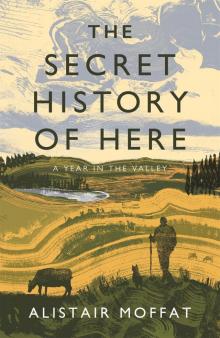 The Secret History of Here
The Secret History of Here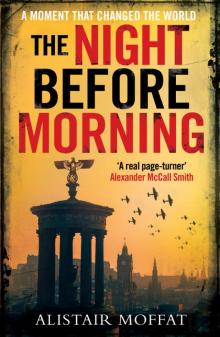 The Night Before Morning
The Night Before Morning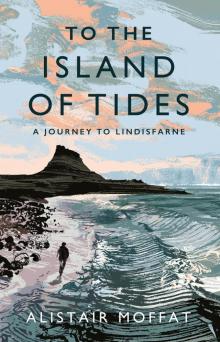 To the Island of Tides
To the Island of Tides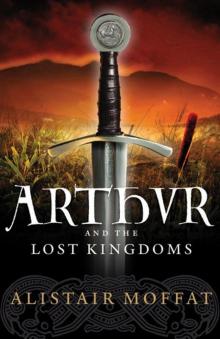 Arthur and the Lost Kingdoms
Arthur and the Lost Kingdoms Britain’s Last Frontier
Britain’s Last Frontier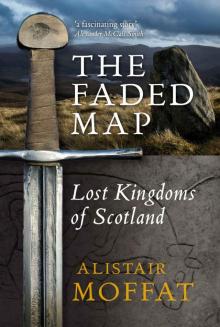 The Faded Map: The Lost Kingdoms of Scotland
The Faded Map: The Lost Kingdoms of Scotland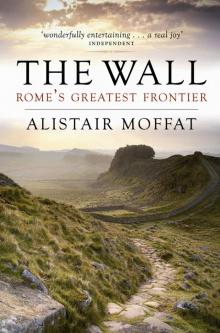 The Wall
The Wall